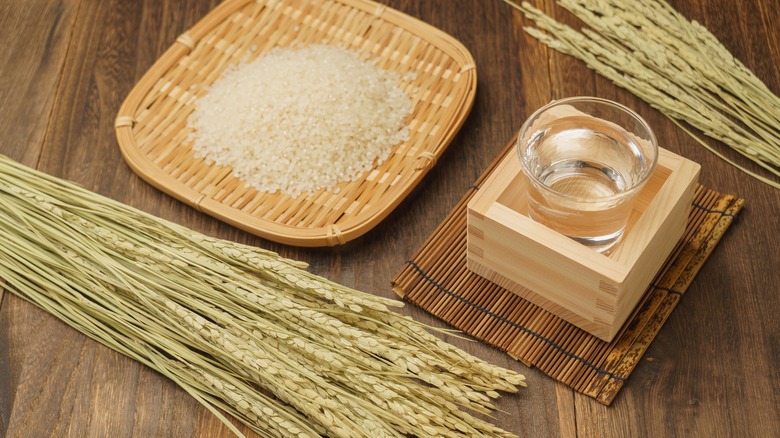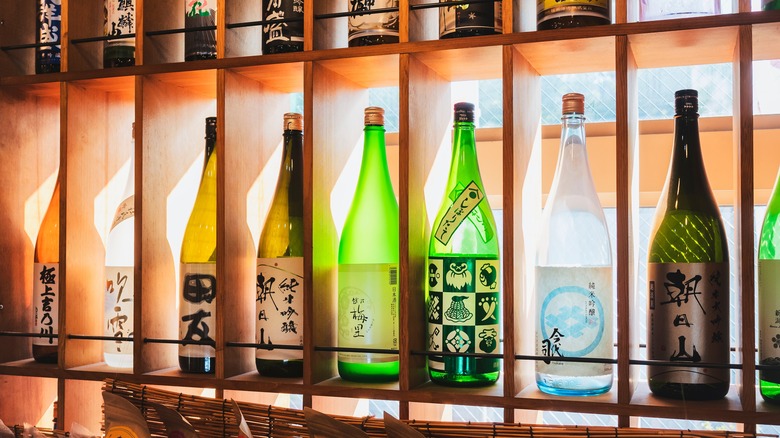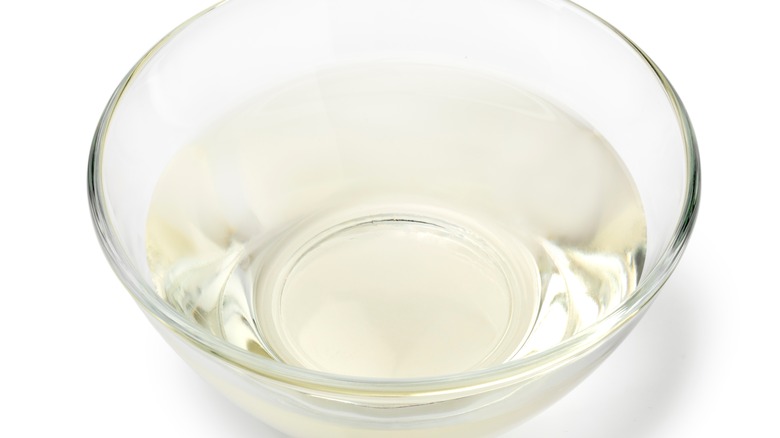What's The Difference Between Mirin And Sake?
Humanity has been finding ways to ferment and drink alcohol from every crop it can get its hands on since time immemorial. Which form that alcohol took depended on where you were. If you were in Japan for most of its history, for example, you were probably drinking something fermented from rice, and most commonly sake, one of the world's most well-known rice wines.
But sake isn't the only food, nor even the only food from Japan, that lays claim to the title of rice wine: There's also mirin. Technically, they're both rice wine, but you wouldn't use them in the same ways at all. For starters, you're probably not drinking straight mirin. You could — it's certainly edible — but it's a lot like cooking sherry in that it wasn't intended for lone consumption and probably isn't going to taste all that good compared to sake. And that's the other real point of comparison: You typically drink sake but cook with mirin because the components and flavor profiles of each have different things to offer.
Sake has long been one of the national beverages of Japan
You've doubtless heard of sake even if you haven't had it before. Not to be confused with shochu (a Japanese alcohol made with basically anything other than rice), sake technically just means "alcohol" in Japan. Unlike most other global wines, it's served warm (or at room temperature) rather than cold and tends to sneak up on you, with an ABV range of 15-17% (compared to around 5.5-16% for unfortified grape wines). It's hard to compare it to other alcohols, flavor-wise, both because of its temperature and because its flavor is sort of like white wine (but not really).
But that's the key here: Sake is typically consumed straight. It has a long, long history in Japanese culture. The first reference to sake manufacturing is from the 8th century, but the first written reference to the beverage goes back even further, to the 3rd century. For a long time in Japanese history, water, tea, or sake were the three beverages you would most likely see available. There is such a thing as cooking sake — but it doesn't taste like mirin. And there's pretty much no such thing as "drinking mirin" — well, not anymore, although there used to be.
Mirin is a sweet cooking ingredient
Mirin is not made for drinking — it's explicitly designed as a cooking additive. Mirin isn't rice vinegar, nor can it be substituted for rice vinegar; it has an entirely different purpose. Mirin is made using a combination of fermented rice, mochi rice, and shochu and is aged over a period of around two months. This time frame is the key because as the rice ferments slowly, it creates sugars, and mirin's defining feature is its sweetness.
That sweetness is how you would use it in cooking: As a counterpoint to other elements in Japanese cuisine. Mirin gives teriyaki its signature sweetness, but it's also utilized in dipping sauces and braising liquids as a counterpoint to something like soy sauce. You wouldn't season purely with mirin (much like you wouldn't season purely with mustard powder), but it's a fantastic flavor connector in many recipes, if not an absolutely essential one.
Sake and mirin have dramatically different purposes, even if they're both technically rice wine. It just shows that language is mutable, and sometimes, you have to dig deep to really tell the differences between disparate products.


